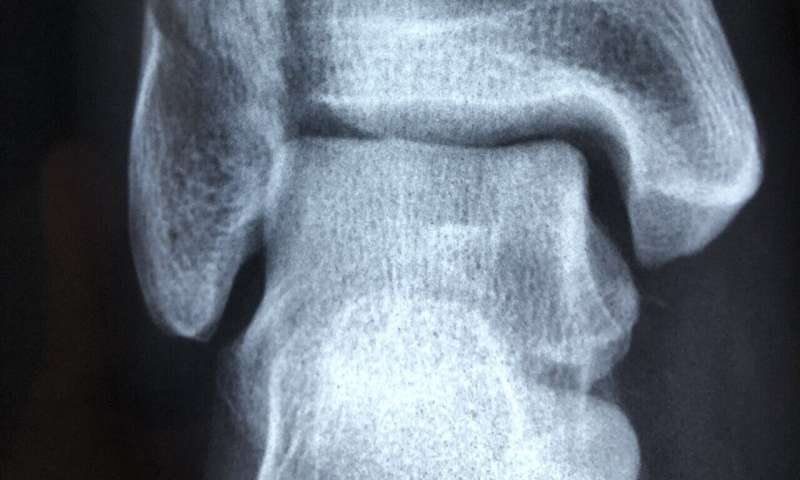Study assesses fracture risk for patients taking multiple medications

There is a strong association between the number of fracture-associated drugs (FADs) older patients receive and their risk of sustaining a broken bone, according to a new Dartmouth study published in JAMA Network Open.
In recent decades, the use of prescription medications has increased dramatically in the U.S. due to factors such as improvements in the ability to detect disease, expanding treatment options, and an aging population. For many older Americans (over age 65), these medications provide an effective means of managing disease and improving both quality of life and longevity.
But many commonly prescribed drugs, such as opioid pain killers, antidepressants, antacids, and sleep aids, are known to carry an increased risk of breaking a bone (by increasing falls, weakening bones, or both). This is especially true for patients whose fracture risk is already high due to conditions like osteoporosis.
"With older adults consuming, on average, five medications simultaneously, we suspected that a good number of seniors are likely to use more than one of these fracture-associated drugs at a time," explains Rebecca Emeny, Ph.D., MPH, a research scientist at The Dartmouth Institute for Health Policy and Clinical Practice and lead author on the study. "We wanted to determine how that increased exposure would impact their risk for hip fractures, which are among the most painful, debilitating, deadly, and costly fractures one can experience."
In the study, the researchers looked at the prescription records of 2.5 million Medicare beneficiaries (from 2004-2014)—determining how many and which of 21 FADs were being taken—and found that these drugs were commonly used and commonly combined among older U.S. residents. They identified hip fracture diagnosis codes from inpatient claims, used statistical analysis to measure the risk of hip fracture associated with each medication, and then compared their findings to the hip fracture risk experienced by people who took none of the FADs.
The investigators were not surprised to find that the more fracture-associated medicines people took, the higher their fracture risk, but the size of the additional risk was more than they expected. On average, taking any one of these drugs doubled a person's risk, taking any two almost tripled it, and taking three or more increased fracture risk four-fold.
The most commonly taken FADs (alone or in combination with others) were opioids, used by 55 percent of the cohort, followed by diuretics at 40 percent, and proton pump inhibitors (PPIs), used to treat acid reflux, at 35 percent.
"While the average effect of FADs was interesting, we expected some drug combinations would be riskier than others," she says. "To explore this, we measured the risk associated with each of the 21 drugs and with each of the 210 pairs one could create with these 21 drugs."
The most hazardous combinations were found to be opioids and sedatives, opioids and diuretics, and opioids and PPIs. Notably, many risky pairs of FADs included potentially avoidable drugs.
"This is an important consideration for patients, if any of their medications are optional and thus can be eliminated with no negative consequences," says corresponding author Nancy Morden, MD, MPH. "In any case, the results of our cohort study suggest caution when combining FADs, especially when use is discretionary, alternatives exist, or baseline fracture risk is high."
More information: Rebecca T. Emeny et al, Association of Receiving Multiple, Concurrent Fracture-Associated Drugs With Hip Fracture Risk, JAMA Network Open (2019). DOI: 10.1001/jamanetworkopen.2019.15348



















